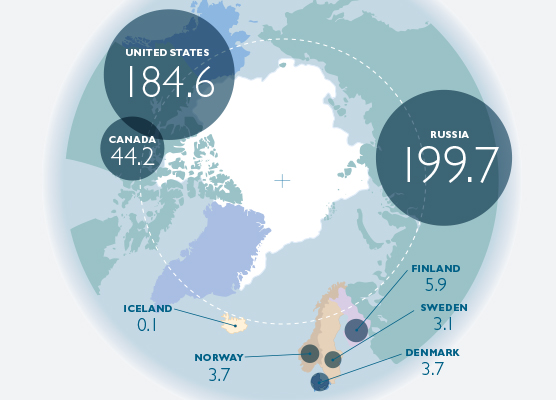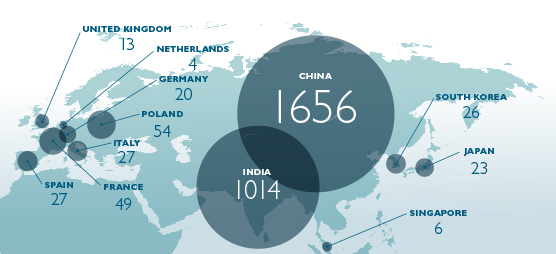Press release 2017-11-06 at 14:58
Over the coming weeks, climate change mitigation and the implementation of the Paris Agreement will be discussed in Bonn. In support of climate change mitigation, the Finnish Environment Institute (SYKE) has produced a synthesis of how black carbon particles, the major constituent of soot, contribute to Arctic warming, in particular, and how these emissions can be reduced.
The Arctic acts as a cooler for the Earth’s climate. If its cooling power weakens, global warming will accelerate. The melting of Arctic glaciers, the Greenland ice sheet in particular, will also raise sea levels.
The message to climate negotiators is that, although the most important actions to mitigate climate change are to control greenhouse gas emissions, black carbon emissions can and must also be reduced. This can be accomplished by using the best available technical solutions and setting tighter emission restrictions.
“Reducing black carbon emissions pays off as, unlike carbon dioxide, black carbon remains in the atmosphere for only a short time. Any measures taken will thus have a rapid effect. In addition, reducing black carbon emissions would bring significant health benefits,” stresses Professor Mikael Hildén, Director of SYKE’s Climate Change Programme. Professor Hildén currently chairs the Arctic Council’s Expert Group on Black Carbon and Methane.

Black carbon emissions from the Arctic Council’s member states in 2015 (million kg)
Though the emissions from the Arctic Council’s member states are about 6 % of the global emissions, they are responsible for about a third of the total warming caused by black carbon in the Arctic. © Marianna Korpi / SYKE
Significant emissions from northern areas
The Arctic is warming more than twice as fast as the rest of the planet on average. Black carbon accounts for approximately 20–25 per cent of warming in northern areas. It is emitted from the burning of wood, other biomass and coal by households, as well as from road traffic, machinery, industry and power plants. Black carbon is also formed during forest fires and flaring, i.e. burning of unutilised natural gas and oil at oilfields.
Arctic warming caused by black carbon is mainly due to emissions transported from southern areas to the north by air currents. Most global black carbon emissions, approximately 60 per cent, come from Asia. Although emissions from Arctic countries are smaller, they account for approximately one third of Arctic warming caused by black carbon emissions.
Further measures needed in Arctic countries
“The warming effect of black carbon can be reduced in the Arctic by an estimated 0.25oC by 2050, using the best technologies. Arctic countries should reduce traffic emissions and restrict flaring in oil production, in particular,” says Kaarle Kupiainen, Senior Research Scientist at SYKE.
In 2015, road traffic and machinery accounted for approximately 40 per cent of total black carbon emissions in Arctic countries. Large power and industrial plants in the Arctic region have already widely introduced technologies that reduce black carbon emissions. However, there are also still some old, inefficient plants with high emissions.
“Finland is in a good position to support emission reductions with new technological solutions. It is also important to develop and use low-emission options for small-scale wood combustion. In Finland, black carbon emissions per capita are clearly higher than in the other Nordic countries,” says Mikael Hildén.
Last spring, the Arctic Council adopted a goal of reducing black carbon emissions by 25–33 per cent by 2025. The World Bank has introduced an initiative to eliminate routine flaring no later than 2030, to which all Arctic oil producing states have committed themselves.

Black carbon emissions from the Arctic Council’s observer countries in 2015 (million kg)
About 60% of global black carbon emissions originate in Asia. © Marianna Korpi / SYKE
Further information:
Director of the Climate Change Programme, Professor Mikael Hildén
Finnish Environment Institute (SYKE)
phone +358 295 251 173
firstname.surname@ymparisto.fi
Senior Research Scientist
Finnish Environment Institute (SYKE)
phone +358 295 251 326
firstname.surname@ymparisto.fi
Communications specialist Leena Rantajärvi
Finnish Environment Institute (SYKE)
phone: +358 295 251 543
firstname.surname@ymparisto.fi
Links:
This Policy Brief is part of a series of info packages the Finnish Environment Institute (SYKE) publishes during 2017 about different aspects of the state of the environment in Finland today and in the future, to mark the country’s 100th anniversary of independence. The fact sheet on climate issues is due to be published in December. The three info packages already published focus on water protection, circular economy and urban nature.